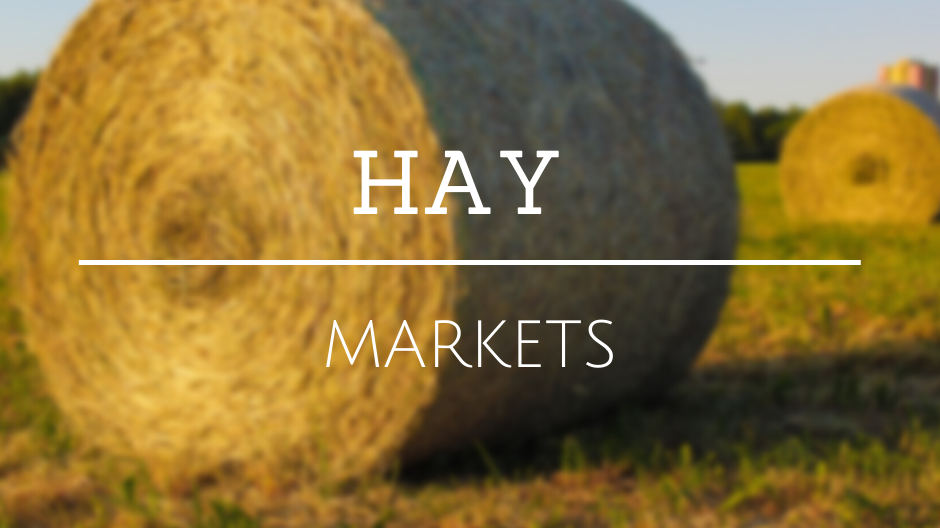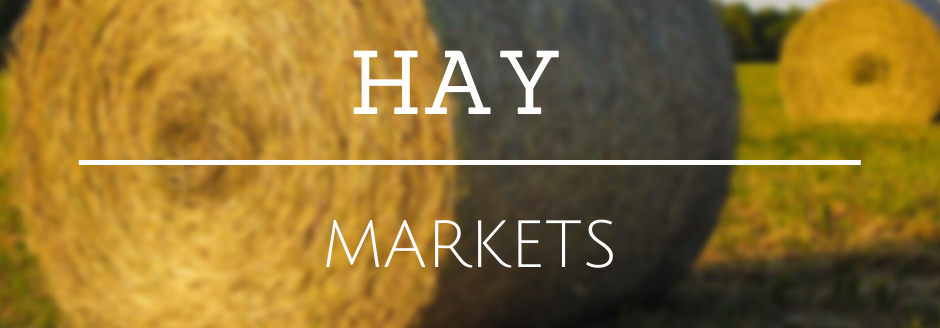Colorado—In the Aug. 24 report, compared to last report, trade activity and demand has softened. Hay trades are slow as second cutting is well underway across the state . Areas that have received a lot of rain since mid May have created challenges in putting up hay that will test. Later cut alfalfa with low test is going to be moving into the grinder markets. Producers have struggled to put up hay without any rain on it. According to Colorado Crop Progress report, alfalfa hay second cutting is 91% complete and third cutting is 25% complete.
Missouri—In the Aug. 24 report, compared to last report, hay movement continues to be good the supply of hay is light and prices are mostly steady. An extremely hot week across the state with actual temperatures near or exceeding triple digits the entire week. Several reports of hay equipment back in the fields as farmers are baling recent growth trying to add some inventory to hay plies. The latest drought monitor is basically unchanged from last week.
Nebraska—In the Aug. 24 report, compared to last report, alfalfa sold unevenly steady. Bales of meadow grass hay sold steady to $25 per ton lower. Ground and delivered forages and dehydrated alfalfa pellets sold steady. Demand was moderate. One would think with the brutal hot weather across the state the hay market would flourish. Not so the case this right now. Many prospective buyers continue to roll the dice hoping the price might still slip downward. Time will tell. Reports of acres of cane, millet and sudan grass on the ground waiting to be baled. Some reports this week that the tonnage on the irrigated sorghum has been very good. Alfalfa production has been good this week with some high-quality hay going in the bale. Downside producers having a hard time baling with lack of humidity in some areas. Thank goodness tractors have lights so producers can bale at night. Meadow hay producers have been going like gang busters getting all they can before the next round of showers hit the area. Many have been able to get down in the low ground without any trouble as water table has receded in this weeks’ heat.
Oklahoma—In the Aug. 18 report, compared to the last report, hay is slow to steady. The demand in eastern Oklahoma is high. The central and western part trade is slow to moderate. Next report will be released Sept. 1.
Texas—In the Aug. 25 report, compared to the last report, hay prices are mostly steady across the majority of the regions, with the exception of the south were prices were mostly firm to $5 higher. Trading activity was moderate to active on good buyer demand. Hotter than average temperatures coupled with dry conditions continue across the majority of the state. As a result, pastures and rangelands have continued to deteriorate and many stands have gone dormant. Drought conditions in the south have caused most producers to only have one cutting so far, some scattered showers have producers hopeful for a second cutting but quality may be impacted. Supplemental feeding of livestock is taking place across most of the state due to drought conditions, but the north, central, south and east have had the most impacts. Next report will be released Sept. 8.
South Dakota—In the Aug. 25 report, compared to last report, alfalfa and grass hay steady. Very good demand remains for all types and qualities of hay. Very hot, 100 degrees, and humid conditions this week with rain late in the week. Alfalfa growers worked to finish up their third cutting. Western areas remain out of drought, there has been great improvement East River yet the I-29 corridor remains the worst.
New Mexico—In the Aug. 25 report, compared to last report, alfalfa hay steady. Trade active, demand good. Alfalfa hay is at 74% finished with third cutting, most producers starting 16% complete with fourth cutting, The northern part of the state is in the third cutting. Some parts of the state have received scattered showers. In New Mexico, the combination of short- and long-term precipitation deficits, poor soil moisture, and rangeland conditions led to widespread deterioration on the map across much of the state.. Hay and roughage supplies were reported as 33% very short, 37% short, 24% adequate, and 6% surplus. Stock water supplies were reported as 38% very short, 29% short, 31% adequate and 2% surplus.
Wyoming—In the Aug. 24 report, compared to last report, hay sales sold steady. Demand was light to moderate in some areas. Hot, humid days across most of the state. Most of the second cutting is done in the east with the western area thinking of starting on second cutting. It has been a trying year for the hay producers on getting top quality hay produced with a high RFV factor when done. Some prospective buyers are rolling the dice and hoping the market will slip downward before they put in their buy orders. Sorghum grass being baled along with producers finishing up on wheat and oat harvest.
Montana—In the Aug. 18 report, compared to last report, local demand for hay remains light, while demand to ship hay out of state is mostly moderate. Sales are seasonably light. Producers are not in a rush to market their hay as price discovery is still occurring. A few large sales occurred over the last two weeks, but sale volume remains seasonably light while supplies are heavy. The square market is very quite as producers continue to ask $180 to $200+ for hay. A few producers are selling hay but well under most producers asking prices. This has stalled the marketing of hay as asking prices and actual sales remain far apart. Many ranchers have stated they won’t need to buy much if any hay this year as many of them have put up enough of their own hay. Second cutting is continuing to wrap up in central Montana as it is 2 to 3 weeks behind the southern and eastern portions of the state. Demand for straw is moderate. Asking prices are mostly $55 to $70 for barley, a slight decline from two weeks ago. Next report will be released Sept. 1.

